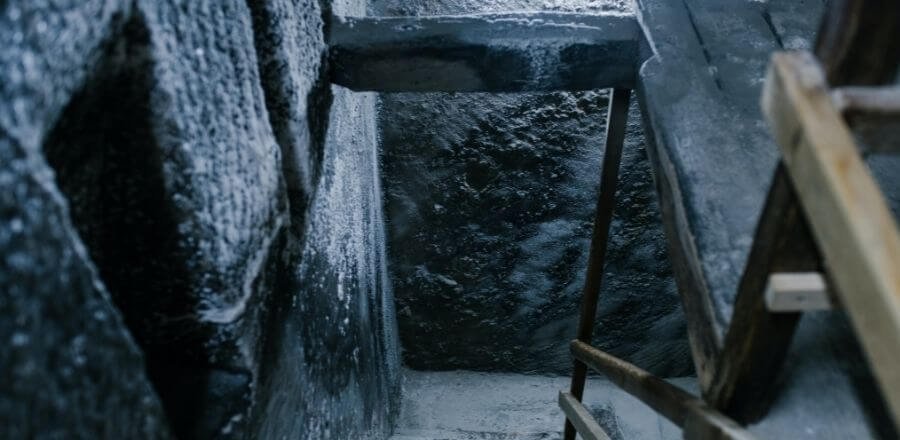What is Mining Fiber Cable?
Mining optical cable is a special application of fiber optic cable in the field of optical communication. It is a communication optical cable that is professionally used in the mining industry. It is an optical cable used in mines such as coal mines, gold mines, and iron mines.
Mining optical cable not only inherits all the performance of fiber optic cable, but also adds many special performances due to the special requirements of the coal industry. Such as flame-retardant properties, anti-rodent properties (special mine environment).
What is The Mining Cable Standard?
Mines, iron mines and other mines, especially coal mines, are accident-prone areas. In order to ensure unblocked communication and reduce losses when accidents occur, the State Administration of Work Safety (National Coal Mine Safety Supervision Bureau) mandates all products used in coal mines. The safety certification also including the communication optical cable, which is mining product safety mark certification.
However, there are no corresponding standards for other mines such as gold mines and iron mines. The comprehensive performance of coal mine optical cables is the only standard currently used in mining. And it is also a relatively high implementation standard for the industry. Therefore, other mines are generally designed and produced in accordance with coal mine optical cables.
The mining fiber optic cable certified by the safety standard has practical scope of mines, tunnels, shafts, and roadways.
How Mining Fiber Cable Looks like?
The structure of the mine optical cable is divided into 2 types, central unitube type and multi loose tube (MLT) layer stranded type. Central unitube is for fiber count 2-12 cores, and MLT layer stranded type is for fiber count 2-144 cores.
Central Unitube Structure
For the central unitube type, there are optical fiber, fiber filling compound, loose tube, steel wire armor, steel tape, PE inner sheath, flame retardant outer sheath from inside out.
MLT Layer Stranded Structure
And MLT layer stranded type are made of central strength member (CSM) reinforcement, optical fiber, fiber filling compound, loose tubes, cable fillers, filling compound, steel tape, PE inner sheath, and outside flame retardant sheath.
Mining Fiber Cable Specifications
| Fiber Count | Loose Tubes | Fillers | Cable Weight (kg/km) | Tensile long/short (N) | Crush long/short (N) | Bending Radius dynamic/static (mm) |
|---|---|---|---|---|---|---|
| 2-6 | 1 | 4 | 118 | 600/1500 | 300/1000 | 20D/10D |
| 8-12 | 2 | 3 | 118 | 600/1500 | 300/1000 | 20D/10D |
| 14-18 | 3 | 2 | 118 | 600/1500 | 300/1000 | 20D/10D |
| 20-24 | 4 | 1 | 118 | 600/1500 | 300/1000 | 20D/10D |
| 26-30 | 5 | 0 | 118 | 600/1500 | 300/1000 | 20D/10D |
| 32-36 | 6 | 0 | 131 | 600/1500 | 300/1000 | 20D/10D |
| 38-48 | 4 | 1 | 139 | 600/1500 | 300/1000 | 20D/10D |
| 50-60 | 5 | 0 | 139 | 600/1500 | 300/1000 | 20D/10D |
| 62-72 | 6 | 0 | 170 | 600/1500 | 300/1000 | 20D/10D |
| 74-84 | 7 | 1 | 200 | 600/1500 | 300/1000 | 20D/10D |
| 86-96 | 8 | 0 | 200 | 600/1500 | 300/1000 | 20D/10D |
| 98-108 | 9 | 1 | 230 | 600/1500 | 300/1000 | 20D/10D |
| 110-120 | 10 | 0 | 230 | 600/1500 | 300/1000 | 20D/10D |
| 122-132 | 11 | 1 | 268 | 600/1500 | 300/1000 | 20D/10D |
| 134-144 | 12 | 0 | 268 | 600/1500 | 300/1000 | 20D/10D |
Mining Fiber Cable Types
According to the characteristics of the transmission medium in the optical cable, the optical fiber (glass or plastic fiber) is divided into single-mode optical fiber and multi-mode optical fiber. So the mining optical cable is divided into single-mode mining optical cable and multi-mode mining optical cable according to the optical fiber it used.
Single Mode
Single mode means that only one wavelength (frequency) is transmitted in the optical fiber. Optical fiber is slightly thicker than the hair, and it’s brittle, easy to break, and tough in tension, which is almost the opposite of the mechanical properties of human hair.
Due to the inconsistencies in the optical transmission performance caused by the other component characteristics of the medium, currently the main single-mode fiber used is B1.1, available wavelengths are 1310nm or 1550nm.
Multimode
Multimode means that multiple wavelengths (frequency) can be transmitted simultaneously in the optical fiber. Multimode optical fiber is generally using wavelengths 1310nm or 850nm
Optical Fiber Transmission Distance
Generally, the single-mode transmission can reach 120km without relay, and the multi-mode transmission can reach 2km. And the 10/100/1000M optical signal can generally reach 60-80km in the single-mode transmission without relay, multi-mode transmission is 500m with 50/ 125um, 200m with 62.5/125um. So multi-mode transmission is generally used for indoor or fiber patch cord, and single-mode is used for long-distance transmission in the field.


